Exploring The Holy Guptar Ghat In Ayodhya For A Blissful Tour In 2025
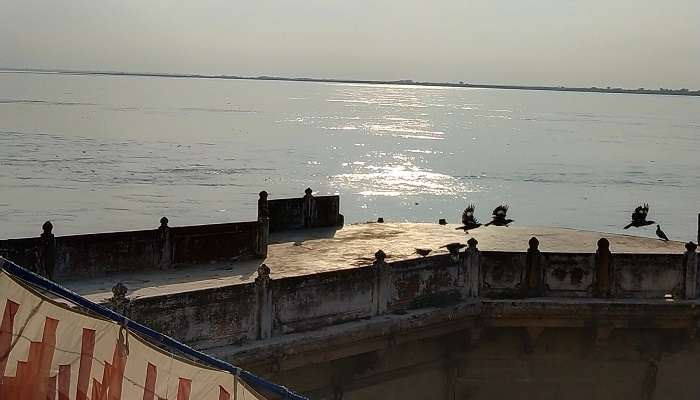
Guptar Ghat is a sacred ghat located on the banks of the River Saryu in Faizabad, approximately 10 km from Ayodhya Junction. It is a famous religious site to visit in Ayodhya. This ghat, which today goes by the name Gupta Ghat Van, was previously located next to the colonial Company Gardens and had a flight of steps leading to the holy river. Among the many temples located here, the Sita- Ram temple, Chakrahari shrine, and Narsingh temple are particularly prominent. The Guptar Ghat, which was renovated in the 1800s and is continually being improved by the UP government, now has contemporary facilities.
History Of Guptar Ghat
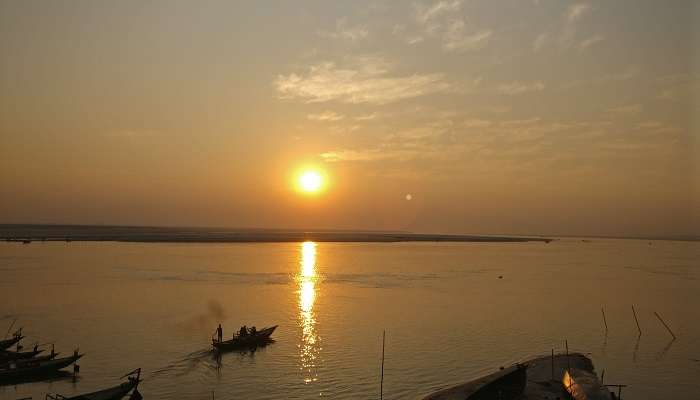
Guptar Ghat has great religious importance. According to tradition, Guptar Ghat is where Lord Rama pondered and performed the Jal Samadhi to leave the planet and return to his original dwelling, ‘Vaikunta’. It is widely held among devotees that swimming in the Saryu river at this ghat will wash away their sins and free them of worldly concerns. The ghat echoes with the shouts of Lord Rama’s name as devotees and priests recite songs in his honour.
Must Read: Places To visit In Varanasi
Significance Of Guptar Ghat
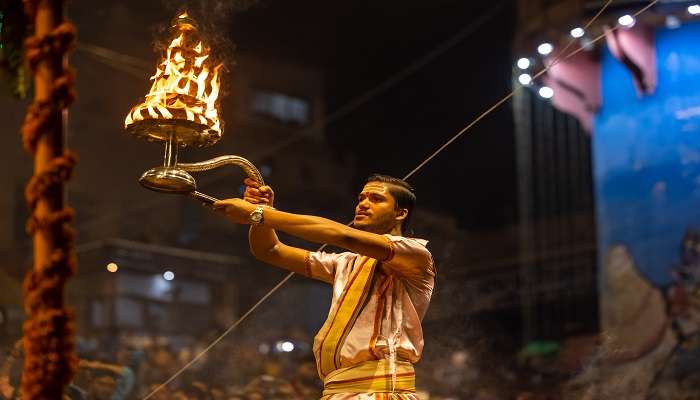
Guptar Ghat carries considerable importance in Hinduism. According to Tulsidas Ramcharitmanas, the Ramayana ended with Lord Rama returning to Ayodhya after murdering demon king Ravana and reuniting with Goddess Sita. However, according to the Uttar Ramayana by scholar Valmiki, Shri Ram maintained his reign for hundreds of years. He carried out his obligations and tasks as a doting father, devoted spouse, loving brother, and obedient son efficiently.
Story Of Shri Ram’s Jai Samadhi
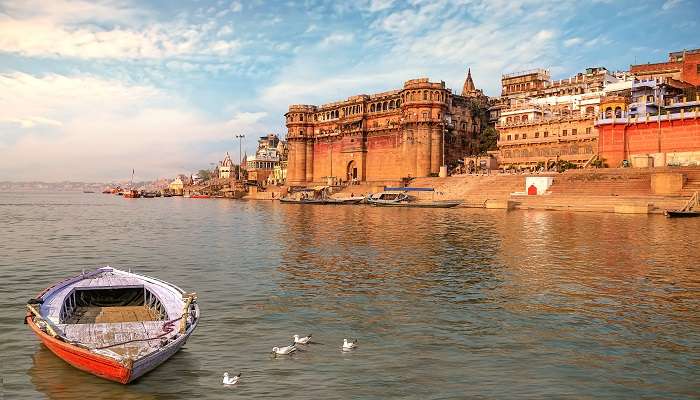
One day, a saint came to Ayodhya and begged Lord Rama to see him individually in a separate location. The saint was Yama Deva (the deity of death). He came to remind him of the end of his time on Earth. Since he requested seclusion, Lord Rama directed his younger brother Lakshmana to watch the room and not let anybody to enter. As fate would have it, Sage Durvasha appeared in Ayodhya and requested an instant audience with the ruler, or the ruler would be cursed to die. Furthermore, everyone was aware of Rishi Durvasa’s rage. Thus, Lakshmana hurried to Shri Ram’s chamber to protect him from the sage’s fury. To attain Vaikuntha Dham, he first requested Jal Samadhi from Lord Rama. Lakshmana, the reincarnation of Sheshnaag (the coiled snake on which Lord Vishnu used to sleep at Vaikuntha Dham), desired to be to Vaikuntha Dham before Shri Ram arrived from Mrituloka (Earth).
Suggested Read: Hotels In Ayodhya
How To Reach
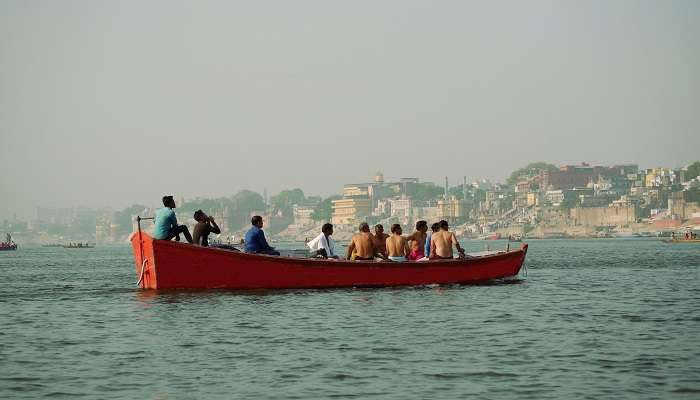
Consider joining Rishikesh Day Tour’s Ayodhya-Kashi Yatra to go on a spiritual trek to Guptar Ghat and revel in its heavenly benefits. Here are several transportation alternatives for reaching Ayodhya:
By Road: Ayodhya is well linked by road with major towns in Uttar Pradesh and adjacent regions. State-run buses and private taxis are widely accessible.
By Rail: Ayodhya has two railway stations, Ayodhya Junction and Ayodhya Cantt, with trains connecting to important cities in India.
By Air: The nearest airports are Gorakhpur (139 km) and Lucknow (151 km), which provide handy flying alternatives. Once you’ve landed, you may go to Ayodhya by rail or car.
Best Time To Visit Guptar Ghat
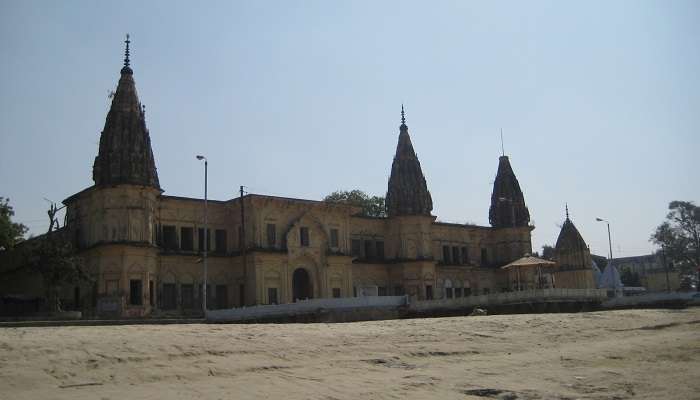
The best time to visit Guitar Ghat, one of the most famous and holy ghats in Ayodhya, is during the winter months, from November to February. During this period, the weather remains pleasant and cool, with average temperatures ranging from 15°C to 25°C, making it ideal for sightseeing. You can participate in the various religious activities and rituals that take place on the ghats along the River Sarayu.
Suggested Read: Ayodhya Ram Mandir
Things To Do Near Guptar Ghat In Ayodhya
There are many things to do near Guptar Ghat, Here are a few handpicked things for you to make your trip memorable and heartworthy.
1. Visit Ram Ki Paidi
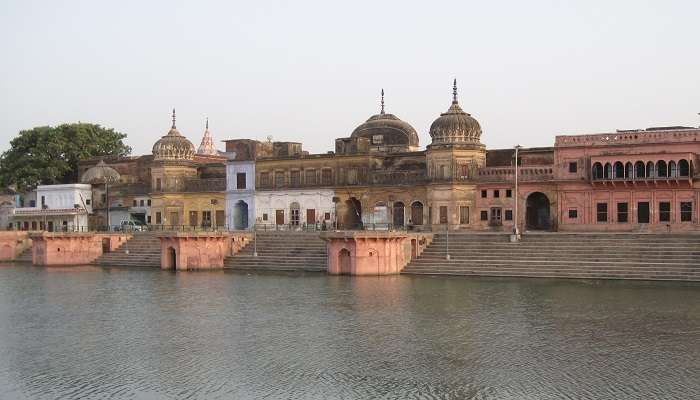
This is a famous ghat where people go specially to take ‘ dubki’ in the holy water of the Saryu River. The Saryu River is considered one of the most sacred rivers in the country after Ganga and Yamuna. It is believed to be the place where Lord Rama took his last bath before leaving for his heavenly abode. Ram Ki Paidi offers an experience unlike any other. This renowned Ayodhya ghat, with its characteristic arched ramps leading into the Saryu River, has remained mostly untouched for generations.
2. Treta Ke Thakur Temple
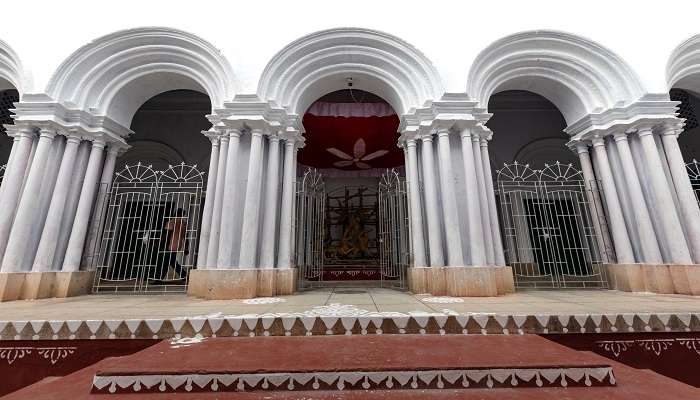
This ancient temple is dedicated to Lord Rama and is believed to have been built during the Treta Yuga which was the second age in Hindu mythology. The Treta Ke Thakur Temple, which takes visitors back to the praised Treta Yuga, is an old wonder. The humble appearance of this shrine betrays its tremendous significance as one of the few remaining temples from Lord Ram’s period. Stepping into the simple doorway, you’ll be met by a beautifully exquisite stone sculpture work. Every inch of the inside is covered with intricately carved deities, floral themes, and images from centuries past.
Suggested Read: Janki Mahal
3. Kanak Bhavan
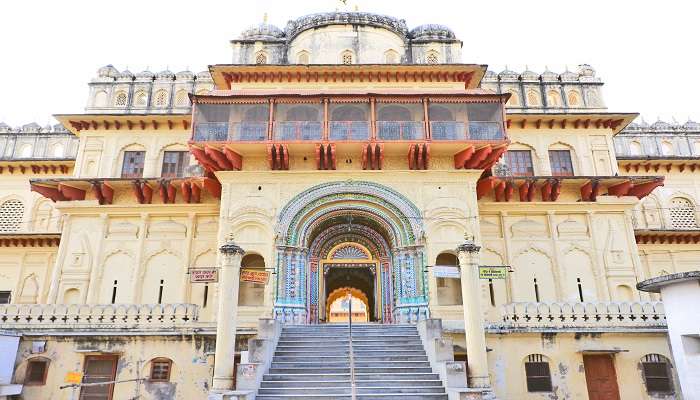
This temple complex houses a sacred chamber where Lord Rama is believed to have been born. This magnificent temple in the holy city of Ayodhya gleams with thousands upon thousands of exquisitely crafted gilded panels. The play of light on the golden walls, ceilings, and pillars produces a warm, ethereal glow. Hindu religious music seemed to resonate off every surface. Despite the throng, an obvious sense of respect pervades the air as visitors push forward for a peek of the sanctum sanctorum. Don’t miss out on enjoying the intricate scenes from the Ramayana, which have been meticulously portrayed.
Further Read: Places To Visit In Uttar Pradesh
Guptar Ghat, the holy and spiritual gateway to Vaikuntha. It is a place where history, mythology, and spirituality come together. You will feel connected to god and also purify your inner soul. As you tour Ayodhya, arrive at Guptar Ghat. The benefits of taking a holy bath and performing rituals here are immeasurable. Each step through this ancient city brings you closer to the miraculous waters of Guptar Ghat. This location will never disappoint tourists with its ideal combination of spiritual and physical elements. Whether a traveller is searching for peace and spirituality or a beautiful place to visit, this place will cater to both your needs. So plan a trip to Ayodhya and prepare to go to a place where you might forget about your usual busy day and immerse yourself where every stone silently tells tales of a past era and where the connection between the human and the divine is made.
For our editorial codes of conduct and copyright disclaimer, please click here.
Cover Image Source: Shutterstock
Frequently Asked Questions About Guptar Ghat
How do I reach Guptar Ghat?
Guptar Ghat is located on the banks of the Saryu River in Ayodhya. It can be easily reached by taking a rickshaw or a taxi from the main city. The nearest railway station is Ayodhya Junction, which is approximately 6 km away.
What is the best time to visit Guptar Ghat?
The best time to visit Guptar Ghat is during the early morning or evening hours when the ghat is relatively less crowded, and visitors can witness the beautiful Aarti (prayer ritual) ceremonies performed by the priests.
Can I take a holy dip in the Saryu River at Guptar Ghat?
Yes, devotees are allowed to take a holy dip in the Saryu River from Guptar Ghat. It is believed that taking a dip in the sacred waters of the Saryu River can wash away one's sins and bestow blessings.
Are there any entry fees or dress codes to visit Guptar Ghat?
There are no entry fees to visit Guptar Ghat. However, visitors are expected to dress modestly and maintain decorum while visiting the sacred ghat.
Are there any facilities available at Guptar Ghat?
Basic facilities like drinking water, restrooms, and small eateries are available near Guptar Ghat. However, visitors are advised to carry essentials like water bottles, snacks, and necessary medications.
People Also Read:
Manikarnika Ghat Shivala Ghat Panchganga Ghat

Passionate Marketing Student with a flair for storytelling, eagerly embarking on a journey within the vibrant world of travel. Excited to merge analytical acumen with creative skills to elevate the editorial landscape of the travel industry.











